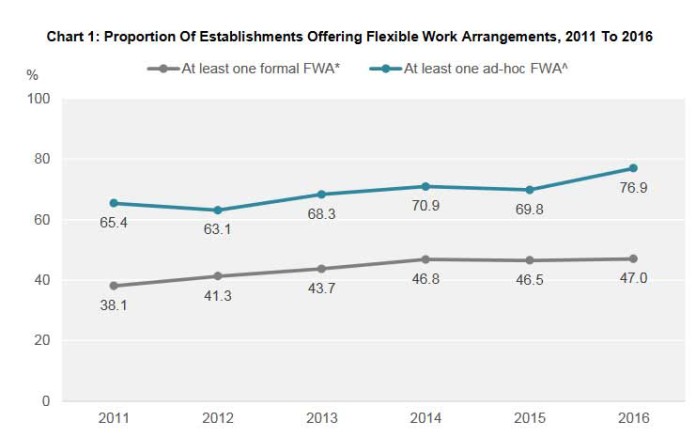SINGAPORE – It looks like employers in Singapore are finally heeding workers’ clarion call to improve work-life balance.
In the past year a number of surveys have indicated that having good work-life balance is increasingly important in the eyes of employees in Singapore, and that many workers still felt that companies needed to improve on this score.
But according to the Ministry of Manpower (MOM) “Conditions of Employment” report released on Monday (Nov 21), more employers are providing ad-hoc flexible work arrangements and leave benefits to help employees cope with personal and family commitments.
The report was based on results of a survey that covered a total of 3,800 companies that employed over 1.3 million employees.
Here are five key findings from the report:
1. More firms giving unplanned time-off or allowing staff to work remotely on an ad-hoc basis
In 2016, 77 per cent, or more than three-quarters of firms surveyed provided unplanned time-off or ad-hoc tele working arrangements for staff to attend to personal matters. This is an increase from 70 per cent last year.
However, just 47 per cent of companies offer at least one formal flexible work arrangement, a rate that is unchanged since 2014.
MOM said that firms were more willing to offering flexible work arrangements on a case-by-case basis as they required fewer adjustments to work arragements.

2. Part-time work still the most common of formal flexible work arragements
Part-time work was the most common formal flexible work arrangements, with 35 per cent of establishments offering such an arrangement. 23 per cent of firms offer flexi-time arrangements, which allow staff to report earlier or later for work.
Only 6.2 per cent of companies allowed formal tele-working.
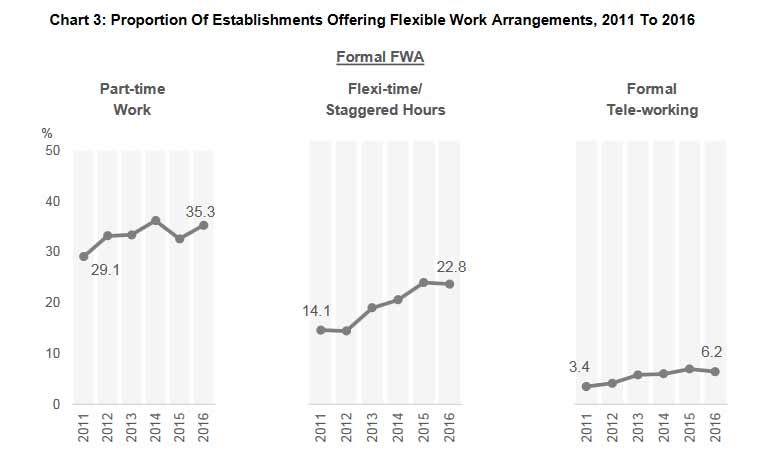
3. Firms becoming more generous with leave
45 per cent of full-time employees now work in companies that gave them at least 15 days of paid annual leave, an increase from 42 per cent in 2016.
But encouragingly, more employers are now offering leave benefits that are not mandated by law to help employees cope with personal and family commitments.
These non-statutory leave benefits include compassionate leave (offered by 92 per cent of employers), marriage leave (74 per cent), study leave (40 per cent), parental care leave (19 per cent) and childcare leave (17 per cent).
More establishments – 54 per cent in 2016 compared to 42 per cent in 2014, also offered unpaid leave of more than one month to staff who wished to pusue personal interest or attend to family matters.
However, the number of employees who took sick leave also rose slightly from 58 per cent in 2013 to 60 per cent in 2015.
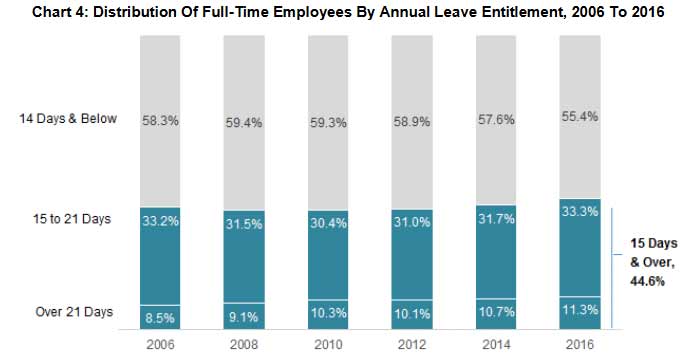
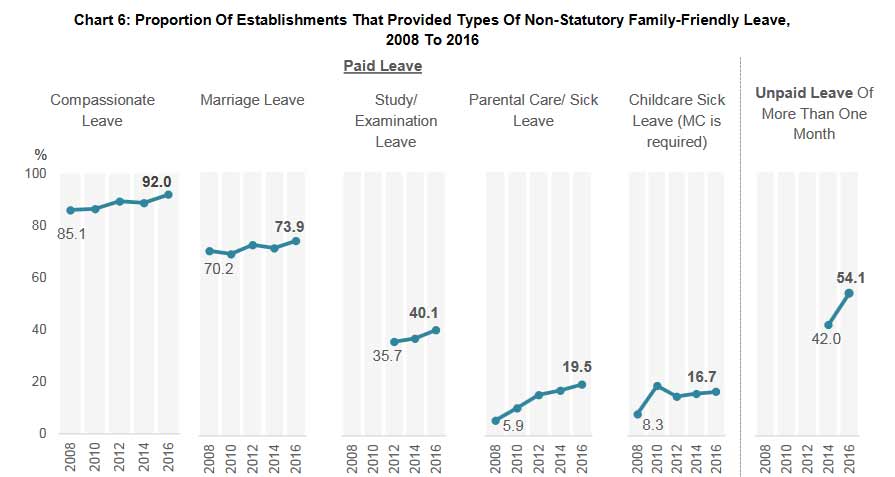
4. More employees now working five days a week
The proportion of full-time employees on a five-day work week rose from 46 per cent in 2014 to 48 per cent today. This also represents an increase from 43 per cent a decade ago.
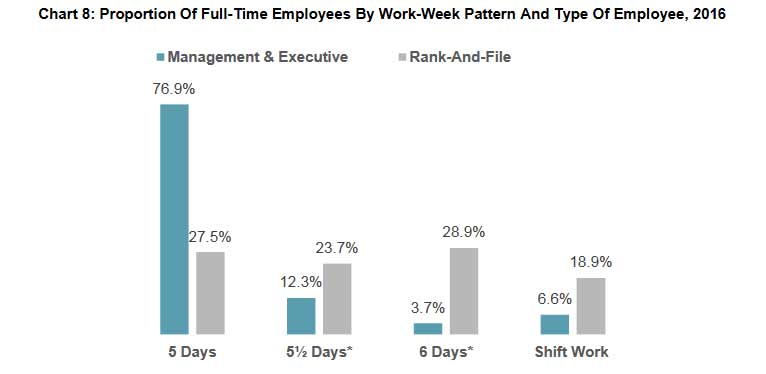
5. Employees less likely to quit companies that offered more work-life benefits
What is the impact of these work-life initiatives?
The study showed that firms that offered more formal flexi-work arrangements, had more full-time employees on a five-day work week and had more employees with longer annual leave entitlements had lower resignation rates.
seanyap@sph.com.sg

